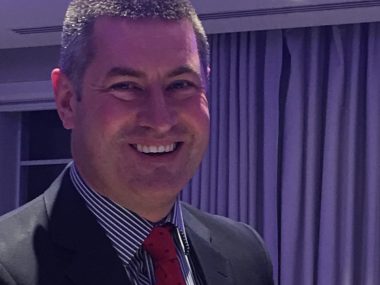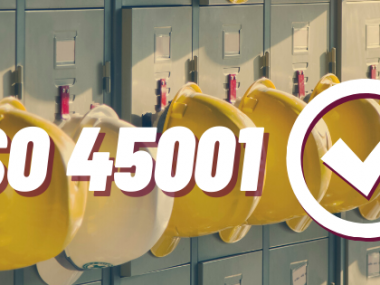
UKPN’s New SWA Standard Will Save Local Authorities ££££’s
UK Power Networks have released a new Engineering Construction Standard using CRE Resources which now enables the reconnection of Steel Wire Armour (SWA) cables that are present on any of the three UKPN Network areas. To understand why this is such important news, it requires some level of context.
As an ICP (Independent Connections Provider) working on the DNO’s (Distribution Network Operator) across the UK, 95% of the time, we are working on Plastic (Concentric & Waveform) or Paper Insulated Lead Covered (PILC) cables. There are exceptions to this such as VIR (Vulcanised India Rubber) cables to name an example. While in some instances these can be worked on in an energised state and under certain conditions, they are not typical across DNO’s.
 SWA (Steel Wired Armoured) Cable however is considered a Non-standard cable type under the various DNO G81 Materials lists. It is not generally considered a DNO cable and would normally only be found on private networks (See picture) across the UK, where the cable can be de-energised and worked on safely. DNO’s have long maintained that SWA cable does not exist on their networks and as such, there has been no process for working on this type of cable safely while the network is in an energised state.
SWA (Steel Wired Armoured) Cable however is considered a Non-standard cable type under the various DNO G81 Materials lists. It is not generally considered a DNO cable and would normally only be found on private networks (See picture) across the UK, where the cable can be de-energised and worked on safely. DNO’s have long maintained that SWA cable does not exist on their networks and as such, there has been no process for working on this type of cable safely while the network is in an energised state.
Two years ago, on the Northern Power Grid (NPG) network, we came across an entire residential estate that had approximately 95 columns connected to the network via SWA cable. Typically, these are passed back to the client and the DNO is then engaged to carry out the work themselves by shutting down the LV Distributing Main temporarily, so that the SWA cable can be pot ended, and a new service off the LV Distributing Main installed. This process significantly increases the cost to the customer, which is more often than not the Local Authority and in turn, the tax payer.
Our engineers agreed that it would be feasible to “safely” disconnect the SWA cable and then joint some concentric cable on to this to effect a connection to the street lighting column in the same way that similar craft activity is carried out for joining PILC to Plastic Concentric. They set about working on some SWA cable and produced a method statement which we delivered to Northern Power Grid. Much to our delight, they confirmed they were happy with our process and we went ahead and successfully transferred all 95 columns.
DNO’s should follow the rule of Best Practise which means what is safe to do in one network operators patch, should, in principle, be safe to do in another.
In UK Power Networks (UKPN) – our host DNO – there are certainly pockets of SWA cable feeding street furniture, both from the Low Voltage Overhead Line (OHL) Distributing Main and the Low Voltage Underground Distributing Main, which we had not been able to work on previously. Armed with our jointing manual, we approached UKPN with a view to them making it possible for us to carry out live transfers on SWA cable on their network. This request was presented to UKPN as part of an effort to help the DNO identify a suitable inclusion to the Competition in Connections, Incentive on Connections Engagement Plan (CiC ICE Plan).
What followed was ongoing discussion, practical demonstrations by our engineering team, internal conversations and ultimately policy changes. A year later, this resulted in ICP’s only being allowed to disconnect an SWA cable under live working conditions and have it permanently pot ended. A transfer of an SWA supply was not approved. A new service off the main would instead be required in order to provide an electrical supply to the new street furniture. While this served a practical purpose, it meant existing street furniture could be disconnected, removed and a new column installed, it still meant that it would be at least a week before the new service could be connected. This new service came at an unexpected additional cost to the client.
Further still, with the introduction of OHL work – which was now a contestable activity and which Electrical Testing were now undertaking on DNO networks across the county – we were finding a large number of columns being fed from OHL using SWA service cables. These cables could be running 2 to 40 meters away underground and often crossing carriageways. At this point, the cost of replacing this street furniture was going to increase substantially. Road crossings. Proof of cable identification trenches. Trenching for new cable laying. New services off the OHL main. Multiple pot ends. What was initially a £500 job was now going to exceed likely five times that value.
We again approached UK Power Networks to look at the feasibility of transferring rather than just disconnecting. James Barker our Chief Engineer, attended a series of workshops and technical meetings with the DNO, in anticipation of influencing policy changes. After six months of driving our agenda we are pleased to say that UK Power Networks have now positively expanded their policy on working with SWA service cable. With the introduction of the New Engineering Construction Standard, ICP’s and the DNO themselves can now safely and effectively disconnect the SWA service cable, and joint onto this using concentric cable to effect the connection to the street furniture. Electrical Testing have been the driving force behind making this happen and we are delighted to have been able to work with UK Power Networks in bringing about this change for the benefit of all stakeholders.




